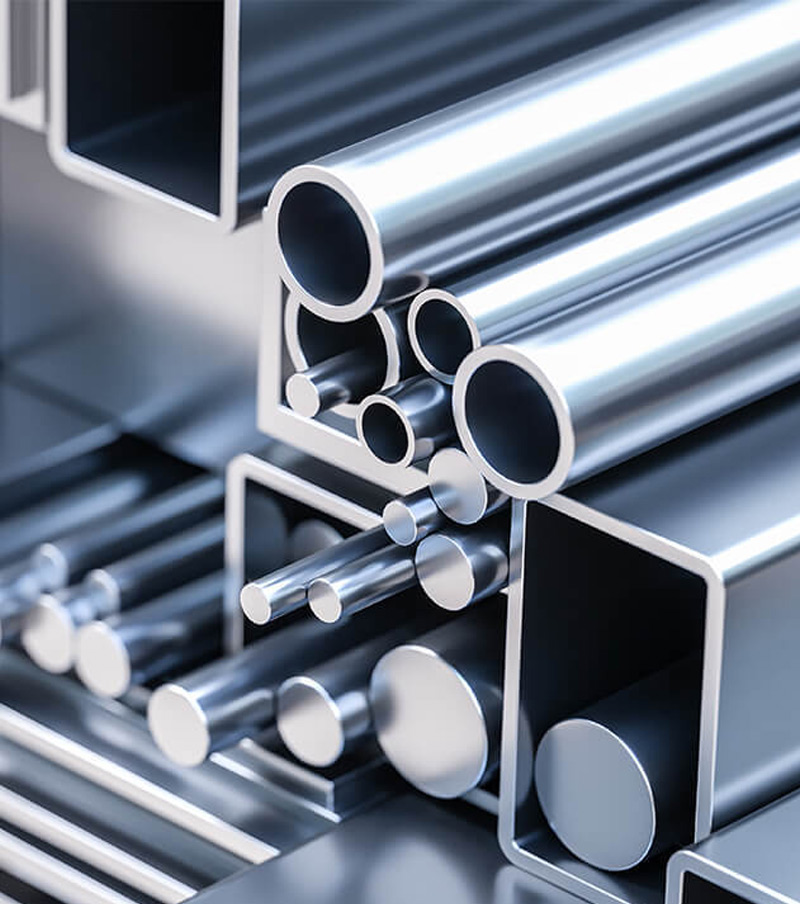History Of Aluminium
- Home
- History Of Aluminium

Quick Read
The story of aluminum’s history of use now stretches over 100 years. The start was a modest one, however because of the complexities of refining aluminum from ore, aluminum was considered more rare and precious than gold or silver through most of the 19th century. A
pure form of the metal was first successfully extracted from ore in 1825 by Danish chemist Hans-Christian. Techniques to produce aluminum in ways modestly cost-effective emerged in 1889.
This lightweight, 100 percent-recyclable metal has since become a foundation of country’s infrastructure, Used in packaging, automotive, energy, construction, transportation, energy, aerospace and defense applications, to name a few—aluminum’s impact is so profound that historians may one day look back on our times and declare this “The Age of Aluminum.”
The Early History of Aluminum
During ancient times, aluminum oxide clays were used in hide tanning, first aid, fabric dying and fireproofing. These major milestones occurred during the aluminum’s “discovery period”:
1865: Science fiction writer Jules Verne describes an aluminum space rocket in his novel, Journey to the Moon.
1886: Oberlin College student Charles Hall and French engineer Paul Heroult separately and simultaneously develop an inexpensive electrolysis process by which aluminum can be extracted from aluminum oxide. The large amount of electricity required to power the electrolytic process limited the production of aluminum. Hall received U.S. patent #400,666 in 1889.
1887: Austrian engineer Karl Josef Bayer developed a chemical process by which alumina can be extracted from bauxite, a widespread and naturally occurring aluminum ore. Both the Bayer and Hall-Herout processes are still used today to produce nearly all the world’s aluminum.
1900s to Present
Aluminum in WWII
With the onset of World War II, aluminum became a key strategic metal. Primary uses of aluminum included the construction of aircraft frames, ship infrastructure, radar chaff and millions of mess kits. America’s supply of bauxite and readily available electricity for primary metal production resulted in soaring output that eventually topped the production levels of all of the Axis countries combined. On the home front, aluminum recycling got an early start. “Tin foil drives” included an offer of free movie tickets in exchange for aluminum foil balls.

Recent Years
Following WWII, Industry shifted gears toward consumer products manufacturing. The early 1950s saw the development of the iconic white-enamel/aluminum-frame washers and dryers. In 1959, Coors Brewing popularized the two-piece aluminum can with a pop-top lid. Equally innovative, a cash payment recycling offer was established for cans returned to the brewery. In the 1980s, space shuttles were launched with aluminum oxide rocket boosters. Steve Jobs recognized both the beauty and strength of aluminum, creating a thin, light product line of laptops, iPads and iPhones. What once was one of the most precious metals on earth, this “King of Metals,” the use of aluminum is still growing. Aluminum-air batteries, nano technology, advanced alloys for space vehicles—the aluminum industry now ushers the world into its second century of “The Age of Aluminum.”
From Edison to Your Home
When the first electrical transmission network was built (Edison, 1882), aluminum was too expensive to be used for wiring. This electrical transmission network was built with copper wiring. Today, aluminum wiring is the top choice for utility and power transmission networks.
